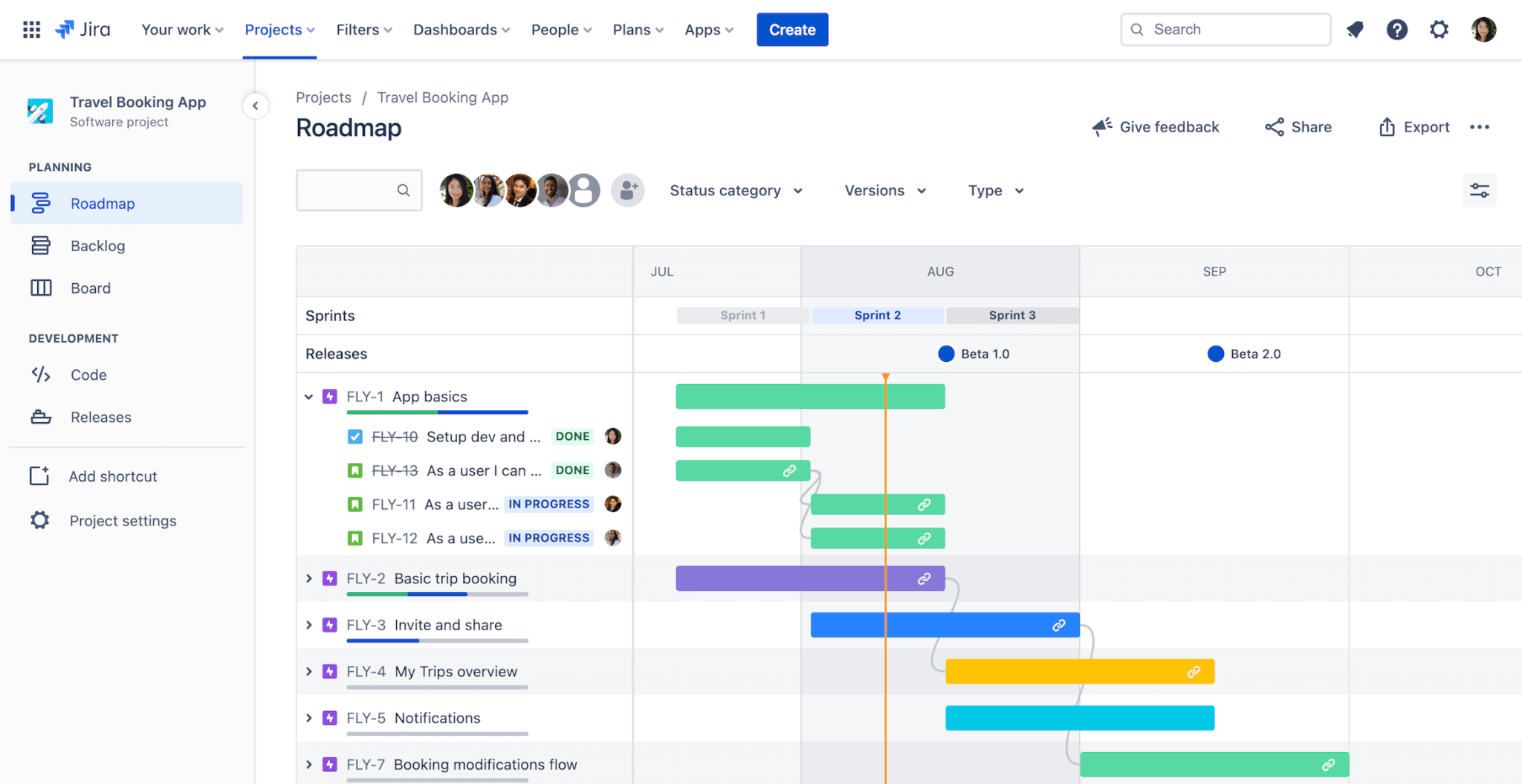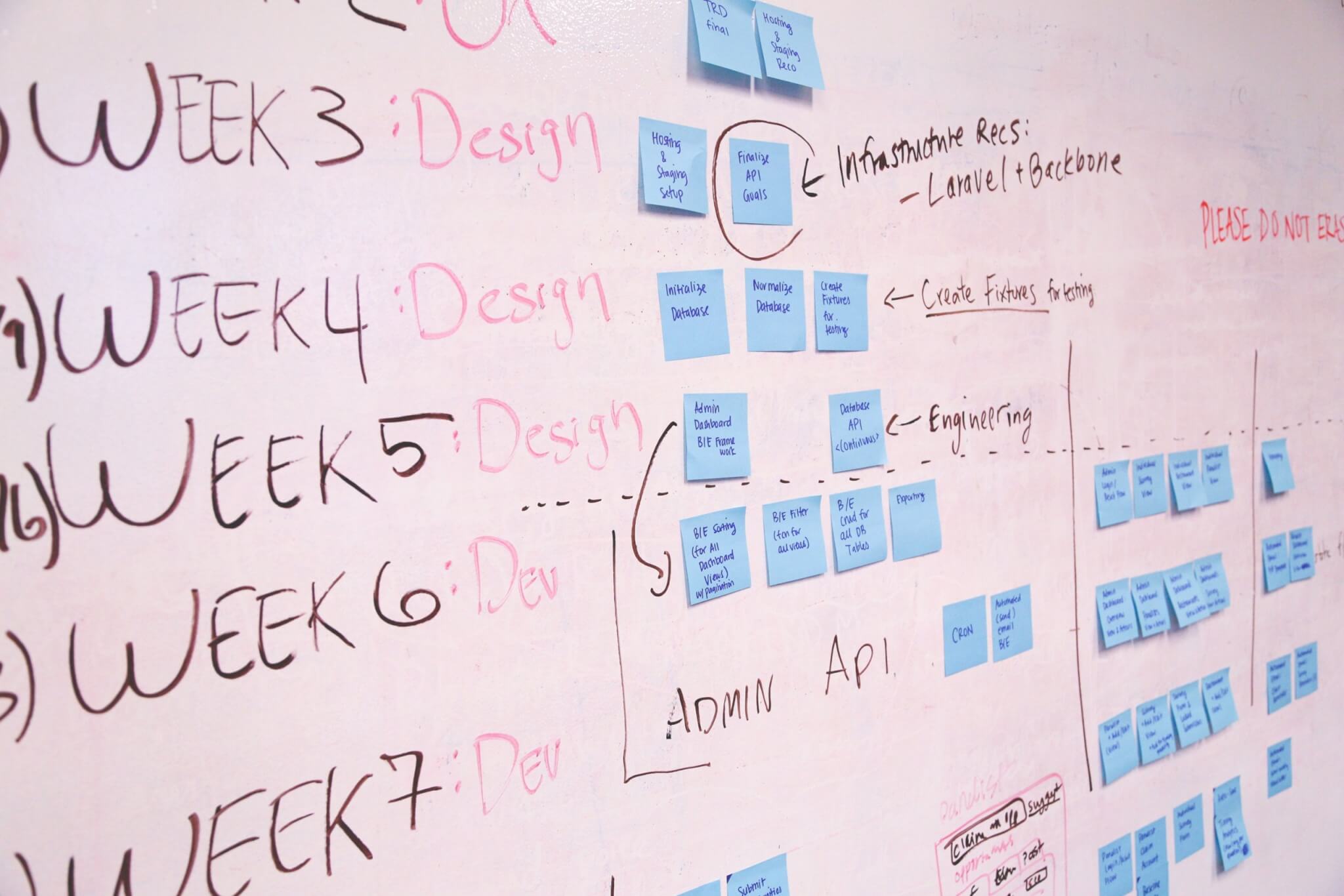Companies regularly develop new products or improve existing ones, and this is what keeps them on track. Yet, product development is a tricky process that involves many people and consists of multiple stages. This complex hierarchy often makes product managers lose their direction and find themselves in a trap.
How to avoid that? Build a product roadmap and set things right.
So, what is product road mapping and why do you need it? Let’s figure it out.
What Is a Product Roadmap?
A product roadmap is a visual work plan that assembles the critical points on how product development proceeds over time, what needs to be implemented and why. Being the primary component of a product strategy, the product roadmap brings value whenever you represent a development team, sales, executive management, or target audience.
What Is a Roadmap in Agile?
A product roadmap is a plan of action for how a product or service will evolve over a certain period. While agile teams deal with iteration, product roadmaps help them focus on the most important areas and work consistently. Unlike product backlogs, agile roadmaps provide a detailed overview of product development and ensure the actions align with the product vision.
What Are the Goals of the Product Roadmap?
- Define a product route
The product roadmap shows the ways to achieve your goals and helps to prioritize tasks and milestones. You elaborate on different routes and compare them to choose the optimal one for your roadmap.
- Track the progress
As your project progresses, the product roadmap shows how far you are from desired outcomes and what’s left to accomplish.
- Align the product vision with development
The roadmap is a north star for the whole organization, so everyone works to achieve product goals. You choose features to implement, set milestones and tasks, and align all these strategic details with your product vision.
- Track the planned time
With the product roadmap, you can track time planned for and spent on tasks and determine whether you are meeting deadlines. It helps the product managers to estimate the team's performance and adjust the workload properly.
- Easy management
Project managers use roadmaps to set task dependencies, distribute resources, schedule meetings, and communicate strategic points to stakeholders. And with product roadmaps, the team knows who’s responsible for what and improves communication and collaboration.
What Are Product Roadmap Types?
There are multiple product roadmap types, so you can choose the one that meets your needs best or mix several types.
- Internal roadmap for the development team describes the product value to be delivered, expected release dates, and project milestones.
- Internal roadmap for executives shows how the team reaches goals and KPIs. It’s more about the milestones than the general development plan.
- Internal roadmap for sales highlights new product features and benefits that should be explained the value to customers and how it changes sales plans.
- External roadmap provides publicly accessible information about the releases, changes, bug fixes and cast a little more light on upcoming features.
- Epics roadmap shows the epic and child items in a calendar view. You can drill down into details on a feature and requirement levels.
- Features roadmap helps to track features development and releases. Product managers use it to focus on features without going into unrelated topics.
- Portfolio roadmap showcases multiple product plans to show them on a single roadmap. It helps evaluate how each product relates to business goals and initiatives.
- Release roadmap covers updates, features, and bug fixes that are supposed to be launched in the upcoming releases. The span of release roadmaps takes from 3 to 6 months, but they might fit into shorter sprints.
- Strategy roadmap visualizes your product strategy and includes tasks to be completed within a specific time, and communicates the upcoming work in a single view internally.
- Progress-based roadmap divides activities into several lanes according to their progress stage. For example, the Kanban board is not restricted by time and arranges tasks into columns such as To Do, In Progress, and Done.
- Time-based roadmap visualizes product development over time and organizes tasks according to dates, deadlines, and milestones. This roadmap type can be too constraining for dynamic businesses that need more flexibility.
- Mixed roadmap combines progress- and time-based roadmaps and allows you to arrange activities into less time-restrictive lists such as In Progress, Next, and Future.
Why Is Product Roadmap Important?
The Culture of Product Strategy
The product roadmap helps visualize and communicate your product strategy and vision to your teams and executives. As a result, everyone understands their investment in reaching common business goals.
Visibility
With the product roadmap, you can track how your development moves on, focus on specific areas and determine the bottlenecks and pain points. You can share the roadmaps with your teams to keep everyone on track and get more transparency.
Cross-Company Collaboration
When the team knows their tasks and priorities, it’s much easier to collaborate. The product roadmap displays how tasks are connected and how they align with the business strategy, so the team knows all the whats and whys.
Ongoing Team Communication
Product roadmaps keep everyone updated and enhance communication and discussions. Since roadmaps are not static, product managers keep plans quite flexible to new objectives and communicate the changes.
Who Is Responsible for the Product Roadmap?
Of course, the product roadmap relates to the whole organization, but the product management team is responsible for creating and managing it. The product manager deals with the roadmap planning by
- gathering product ideas and strategic details
- coordinating meetings on roadmap planning
- leading discussions of feature ideas
Who else should be involved in roadmap planning?
- Product owner focuses on product goals and helps to bring the product manager’s goals to life by guiding the development team on workflows.
- Development team lead allocates resources and estimates the team’s stack.
- Executive stakeholders review and approve product roadmaps and supply budgets to execute the plan.
How to Create a Product Roadmap?
Step 1. Set up a Product Roadmap
Build a product roadmap and make sure it answers the following questions:
- Why does your company need to launch this product?
- What resources are needed to accomplish this plan?
- How does it meet customers’ requests and expectations?
Step 2. Review and Manage Ideas
Create a draft of your product roadmap and evaluate it with the team and executives. Gather feedback to improve your product roadmap.
Step 3. Define Features and Requirements
Prioritize the features and requirements and align them with your goals and user stories. Also, ensure your development team understands the product manager’s expectations and customers’ needs.
Step 4. Plan Releases
Now that you've set your product roadmap and defined the best algorithm to achieve product vision, it’s time to put it all on a timeline. Determine your project phases, priorities, and milestones and sort them into releases. Voilà! Your roadmap is ready.
Note that you should update your roadmap to provide your team with relevant data. It’s a good idea to set automated updates in your project management tool and make adjustments on the spot.
Here’s what a product roadmap in Jira looks like

Source: Jira
Step 5. Choose Roadmap Views
It’s essential to choose the right product roadmap format to highlight necessary information. You can visualize your product roadmap with tools like Excel or Google Sheets or use roadmap templates which are a common feature of product management software. Gantt charts and Kanban boards can come in handy, too.

Source: Asana
What Should the Product Roadmap Include?
No matter what product roadmap type you choose, each has essential elements. Let’s check them out.
- Goals prove the viability and gains of strategic objectives and diverse targets of the product you are going to launch or update. Here, you can dig into the detail and set some timeframes and metrics to estimate company capabilities.
- Initiatives take a higher place in the strategic hierarchy and demonstrate how different features interrelate in the product strategy. You can group product features into initiatives or themes to show what work should be accomplished to reach your objectives.
- Release is a product or new features launch. The releases that meet own deadlines require thorough planning and proper estimates with your development team.
- Epic is a group of features or stories united by a single aim. You can break a theme into several epics to plan and arrange features that bring value as a set.
- Features are essential in product roadmaps since all the stories, epics, and themes are based on them.
- Timeline shows the priority order of product features on when they should be released and communicates how much time the team expects to spend on each feature.
How Do You Prioritize Features for the Product Roadmap?
Product road mapping requires a lot of analysis and estimation. You need to organize your backlog and choose features for your product roadmap. How to cope with the product roadmap painlessly? There are many techniques that help product managers to prioritize features, such as OKRs (Objectives and Key Results) and RICE Scoring Model.
For example, the OKRs method facilitates long-term planning by setting clear objectives and key results to guide your process. The RICE model means scoring features or products according to four factors: Reach, Impact, Confidence, and Effort.
Use prioritization frameworks just to ensure the consistency of your decisions. What is still left to you?
- Scrutinize your product strategy, including the measurable goals that correspond to your product vision.
- Review all requests from customers and stakeholders.
- Organize and score your product backlog.
Why Do You Need a Product Roadmap?
A product roadmap is a dynamic and straightforward document that breaks down the product strategy into key points and dates. Thus, it unites product managers, developers, marketers, and other stakeholders into one team and pushes them toward the common goal. Understanding the strategic vision and knowing what to do drives quick and quality results.
Have a data migration in mind?
Let's migrate PM data together!

